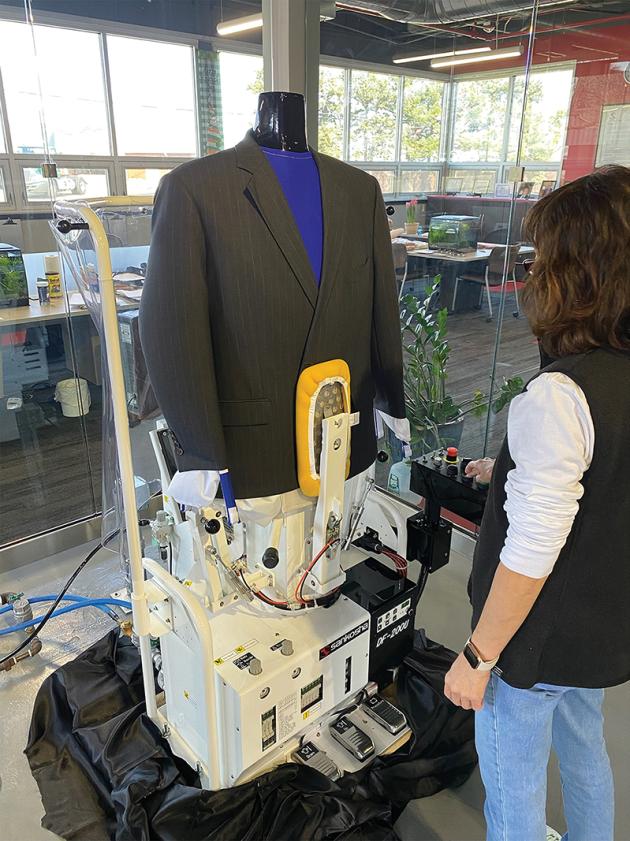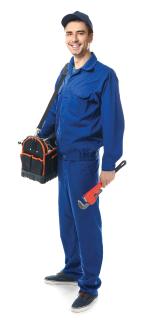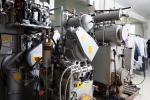CHICAGO — For dry cleaners looking to save both time and labor costs while increasing the quality of their finished products, tensioning machines are a type of equipment that can check all the boxes. And, as consumer fabric choices and labor conditions have evolved, these machines have advanced as well, keeping pace in the pursuit of meeting customer needs.
Tensioning machines get their name from the tension they use to stretch garments over a form or frame, and then use steam and heat to remove wrinkles and creases. They then cool down and, in some cases, use a vacuum system to remove excess moisture from the garment. The result is a finished garment that is dry, wrinkle- and crease-free, and ready for the consumer.
“These machines allow an operator to finish a piece quickly, eliminating the need to hand-press the entire garment,” says Mike Tungesvick, national sales manager for equipment manufacturer Sankosha USA. “It speeds up production and allows fewer hands to be needed. The quicker you can get done, the quicker you can shut your boiler off and keep your labor costs in check.”
Their ease of use and how quickly employees are able to get up to speed on operating them has only added to their value, says Yuriko Tanabe, vice president of European Finishing Equipment Corp./Hi-Steam, based in Secaucus, New Jersey.
“Tensioning machines achieve a high-quality result with less time, less labor and lower energy consumption,” she says, “whether you are a high-end or an economy-priced cleaner. It’s great for everybody.”
“On the labor side, less-experienced operators and finishers are driving the engineering changes,” says Jim Groshans, sales manager for Unipress Corp., headquartered in Tampa, Florida. With the help of tensioning equipment, operators can provide superior outcomes, “and may even be able to complete the job a bit faster.”
Today’s Machines
Programmable digital controls that allow real-time data for performance and process, better adjustable forms, improved materials, and increased safety features all work to make sure today’s tensioning machines provide the desired results, Tanabe says. And, since the machines are easier to use, it gives owners and managers more options when it comes to who will run them.
“The machines are easy to learn how to use,” she says, “so cleaners can hire unskilled labor to run them, which is nice, especially in these days of labor shortages. You don’t need someone who has 20 years of experience. You can take someone off the street and teach them how to use them.”
“What’s really evolved is trying to make the equipment easier for the operator,” Groshans says. “Things like rotating carriages for upper garments are key because it makes loading a lot easier. It makes using the equipment more user-friendly and still puts out a very good quality of product and fabric choice for the consumer. No-crease pants, for example, are perfect for a tensioning topper where, after the cycle, you can just place the pair of pants on a hanger and skip the press all together.”
Today’s machines are also friendlier to the environment — and to their operators.
“Programming is allowing the machines to cut steam consumption by 25%,” Tanabe says. “It uses less heat, which makes for a more comfortable atmosphere for the workers and is more energy-efficient. People should pay attention to the environment.”
Times for Tension
For most garments, Tanabe says, tensioning equipment should be the go-to machine for cleaners.
“You can do almost everything on a tensioning machine — all types of fabrics with today’s casual clothing,” she says. “The finish you get from tensioning machines is ideal. They can restore the garment to its original shape and allows it to move with the body.”
“Medium-finished garments are perfect for tension equipment,” Groshans says. “This type of garment includes some of your blends — cotton, wool or polyester — and they do really well with tensioning steam and drying.”
He goes on to say, however, that tensioning isn’t the best tool to use for everything that comes across the front counter.
“For shirts or tablecloths that need pressing — what we call ‘hard-finish’ items — you need high temperature, high pressure and extended pressing times,” he says. “Soft-finish items — things that are very delicate — need just steam or heat, and maybe limited vacuum or limited air. Those do not work well on tension equipment. You also need to avoid any fabric blends that stretch, such as spandex and all the related cousins, like Lycra and elastane. Once those expand, they never come back.”
Come back Thursday for Part 2 of this series, when we’ll look at the tensioner’s place in the plant and what it takes to train workers to use it to its fullest.
Have a question or comment? E-mail our editor Dave Davis at [email protected].





















